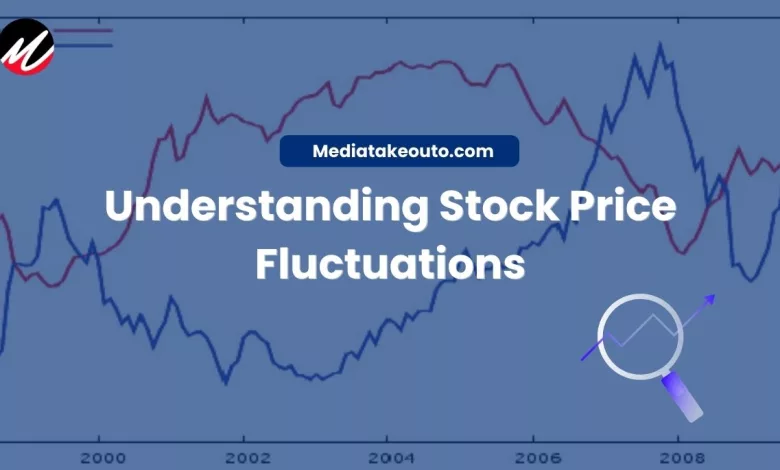
Far too often, new investors panic over normal short-term stock price fluctuations or get misled attempting to time volatility exactly right for profit windfalls. However, seasoned traders understand that reasonable periodic fluctuations represent intrinsically volatile – yet expected – market cycles rather than automatic signals to buy, hold or sell specific holdings impulsively.
By appreciating key drivers that impact valuations, from quarterly performance reports to executive changes and geopolitical undercurrents, shareholders can build realistic frameworks for parsing pricing trends more objectively without reactive emotions clouding their judgment.
Get informed on typical sector-specific volatility ranges so day-to-day changes seem less scary. Here’s what every investor must know to properly understand and navigate share pricing fluctuations:
1. Expect Some Degree of Volatility
Don’t anticipate stock values will increase linearly forever without some bouncing around on the charts – even for strong performers!
Unless investing solely in exceptionally stable, predictable sectors like essential utilities less swayed by economic changes, reasonable price fluctuations generally represent normal market movements – not cause for concern over solid picks.
Even strong performers like Rio Tinto Limited have share prices have jagged price charts – see Rio Tinto stock price chart. A good tip is to build mental frameworks expecting occasional 5-10% profit-taking dips after surges.
2. Understand Key Drivers That Impact Pricing Trends
Many factors drive pricing swings, including:
- Quarterly financial performance reports triggering reactions
- Major industry innovations or scandals shaking sectors
- Economic policy shifts by central banks and governments
- Global events like pandemic waves and geopolitics influencing certain sectors more heavily
- Executive leadership changes that create uncertainty
- Major lawsuits generating worrying headlines
- Interest rate adjustments by impacting discount rates
- High-profile project failures or wins
Follow news related to your individual stock holdings to grasp the profit drivers most relevant to each company’s valuation narrative, and remember that most news headlines are forgotten in a year if not a week.
3. Sector-Wide Trends Also Sway Values
Sometimes individual stocks fluctuate more significantly due to overall industry sector headwinds or tailwinds rather than solely company merits for certain periods.
For example, when exchange rate currency fluctuations eat into profitability for multinational technology companies, valuations often drop across most sector players regardless of their leadership or differentiated advantages insulating performance. Similarly, an oil pricing boom lifts valuations broadly for producers and support services companies playing in the same ecosystem.
This is not always cause for panic, and understanding that these events are generally cyclical can help you avoid unnecessarily selling valuable stocks in your portfolio.
4. Buy on the Dips Wisely
Smart investors selectively average down entry prices during temporary yet exaggerated stock selloffs – provided the long-term growth outlook remains strong despite short-term plummets of 10-15%.
For example, irrational overreactions to a single quarter’s marginal earnings decrease might create a favourable buying opportunity. However, avoid “catching falling knives” by averaging down in true meltdowns signaling disastrous trajectories where exiting positions prove wise.
Carefully evaluate the root causes of dips to determine if temporary underreactions to wider sector corrections might set up lucrative rebounds later or if declining fundamentals necessitate selling out.
Essentially, not all dips become rewarding bounce-back scenarios, so analyse the duration and drivers with care when deciding to hold through volatility versus cutting your losses and reallocating capital to more promising stocks.
5. Beware Trading on Emotions
Both greed and fear cloud rationality. Avoid panic selling quality stocks prematurely over somewhat inconsequential single-digit earnings decreases or isolated political events unlikely to impact performance years ahead.
Likewise, don’t chase irrational FOMO bubbles with wildly inflated valuations disproportionate to realistic valuation models. Rely on detached evidence-based analysis aligning buy and sell decisions to researched value indicators – not emotions stirred up by alarmist market pundits.
6. Use Tools for Routine Market Pulse-Checks
Use free tools offered by leading digital brokerages or trusted market news sources to set helpful custom price alerts for securities.
Configuring notifications to receive timely alerts via email or text if holdings breach personalised thresholds in either direction keeps you effortlessly updated on gains and drops without constant price chart monitoring.
Finally, set alerts around both individual stock valuations and major market indices too as reference benchmarks.
Conclusion
While unpredictably fluctuating share prices will inevitably test stock market investors regularly, getting informed on pricing drivers, and typical volatility ranges helps investors evaluate storms more rationally.
By focusing on long-range potential and making data-driven moves, your portfolio has a better chance of staying on course!






